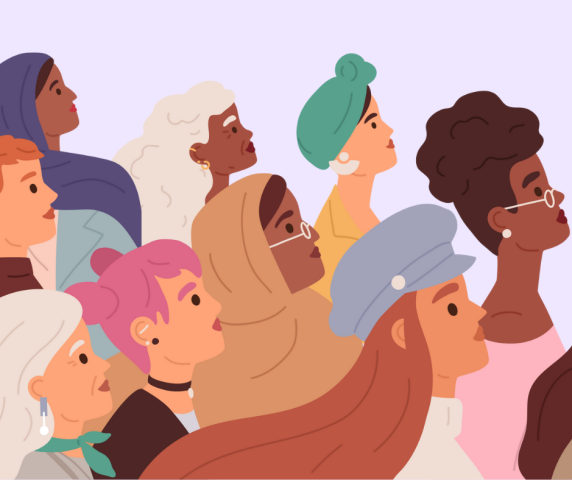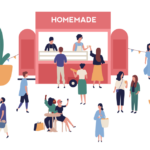- Jesi Bolandrina
- March 7, 2022
Independent workers. Freelancers. Gig workers. There are plenty of names for workers who choose to work outside of a more traditional employer-employee relationship. The gig economy’s growth predated the pandemic. Numbers have continued to grow as Americans leave their jobs in favor of flexible work. While many criticize the risks of the gig economy, that hasn’t stopped workers from making the leap of faith. Many women in the gig economy have found success and view independent work as a better fit for their needs and lifestyle.
Disruption: How the Pandemic and Great Resignation Impacted Women in the Workforce
The impact of the COVID-19 pandemic on the American workforce is still felt nearly two years later. From mask mandates to stay-at-home orders to the pressure placed on essential workers, Americans in every industry were impacted. Unfortunately, many studies have found that women were disproportionately hurt by the pandemic’s impact on the workforce.
At the beginning of the pandemic, job loss rapidly swept the country. Axios Media reports that women “were overrepresented in hard-hit industries like hospitality and service.” Other industries were also areas of increased job loss. Some examples include leisure, hospitality, education and health-care. Women, especially non-white women, were a large part of these effected workforces.
After initial waves of job cuts, another job market phenomenon occurred. Many have called it the “Great Resignation,” but some media outlets referred to the mass exodus of women from the American workforce as a “shesession.” Both of these terms refer to workers deciding to leave their jobs, either for good or to pursue another job or career. In many households, women were more likely than men to leave their jobs to take on a caretaker role for children or elderly family members. Stay-at-home mandates, school closures, and the cost of childcare were factors in women pivoting from their career to being caretakers.
Women in lower-income families, disproportionately women of color, are often both the breadwinners and caretakers in their families. Losing work had an even more catastrophic impact on these women and their families’ wellbeing. Studies have found that Black women are 67% more likely to be unemployed and Hispanic women are 73% more likely to be unemployed compared to white women. This makes it even more important for these women to return to work and find income opportunities that let them earn the money they need on a flexible schedule.
Solution: Women Return to Work Through the Gig Economy
Defining the gig economy and its workers has been an ever-changing conversation. Since 2019, the gig economy has experienced growth as workers look for flexible, independent income opportunities. Within the gig economy, women are finding their own ways to earn money on their own terms. In 2021, the American Action Forum reported that women now make up approximately 46% of the independent contracting workforce. This number is up from 33% in 2017.
While many people think ride-share companies make up the majority of the gig economy, there are many more types of gig work that people can engage with. Women in the gig economy have primarily engaged with work that falls into these three categories:
- Professional Freelance
- Direct Selling
- Service Platform
A great example of a female-led space is Etsy, where 85% of independent sellers are women. Women also have a strong presence in the multi-level or direct marketing job types, and their numbers are growing in delivery and driving roles.
Flexibility: Why the Gig Economy Is Where They’ll Stay
Flexibility is often used to describe why the gig economy is so attractive to workers. You can find flexibility in your job type, working hours, rates, and more. This is especially beneficial for women who may pursue different levels of commitment. Some may focus on how much they can earn, while others are trying to find supplemental income that works alongside their busy schedule. For example, a DoorDash survey found that 80% of women cited flexibility as the reason they chose that job. 60% said their job flexibility allowed them to care for a loved one.
Compared to men, a study has found that women “are more likely to earn supplemental income and to work part-time than men.” With many types of gig work being remote or work from home, women can pick and choose from opportunities that match their needs.
The gig economy is home to millions of workers, and research has found that white adults are not the majority of the workforce. A Pew Research Center survey done in August 2021 found this racial spread when surveying gig platform workers: 30% Hispanic, 20% Black, 19% Asian and 12% White. The gig economy is giving these ethnicities, and the women in these groups, chances that might be harder or out of reach in a traditional corporate America.
Another issue that women can better address while in the gig economy is burnout. Women in traditional employment, especially corporate America, have experienced increased levels of stress and depression related to their jobs. Impostor syndrome and a lack of work/life balance have also been reported. Self-care can be easier to focus on when you’re in the gig economy and have more control over your work schedule and its demands.
Women in the Gig Economy Will Continue to Define Their Own Success
As the gig economy grows, we’ll see more and more women finding ways to define their own success. From creators, to resellers, to skilled freelancers and more, there are so many paths to advance your life and goals. Jobble, as the largest gig marketplace for independent workers, is here to support workers of all genders, backgrounds and experiences. From equal wages and opportunities, to providing an encouraging environment where women in the gig economy can grow, we look forward to the day when women in the workplace can always feel confident, powerful and welcomed.
About the Author: Jesi Bolandrina is the Content Marketing Manager at Jobble. As a former gig worker, she knows how hard it can be to feel like you know what you’re doing. This is especially true in an ever-changing workforce. She’s your go-to for news and information from career development, to health and wellness, to finances and more. She curates Jobble’s blog, articles and is the editor of The Everyday Hustle newsletter. If you have any ideas for topics Jobble should cover, let her know.










